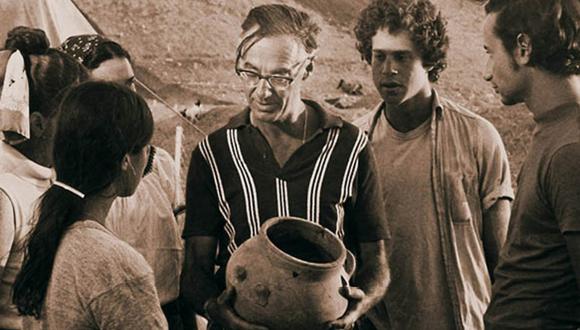The History of The Sonia and Marco Nadler Institute of Archaeology
The Department of Ancient Near Eastern Studies was formed in 1962 under the direction of Prof. Shmuel Yeivin. Yet in 1968, as Yeivin approached retirement, Yohanan Aharoni was called to take his place. Already a professor at the Hebrew University, Aharoni agreed to accept the position at Tel Aviv on one condition, that in addition to leading the Teaching Department, he would establish an Institute of Archaeology. The notion behind the creation of an Institute was, that it would lead field excavations, and possess all the facilities necessary for archaeological research.
Since its creation, the Institute has been intensively involved in many major interdisciplinary archaeological projects. Excavation of sites such as Tel Aphek-Antipatris, Tel Arad, Tel Beer-sheba, Tel Bet Shemesh, Tel Hadar, Horvat Qitmit, Horvat 'Uza, Tel 'Ira, Tel Jezreel, Tel Gerisa, Tel Yafo, Tel Kabri, Lachish, Tel Michal and Tel Megiddo has contributed to a better understanding of the archaeology and historical-geography of biblical Israel. The archaeology of proto-historic and prehistoric periods has been investigated at Nahal Qanah, Nahal Zehora, and sites in the Sinai. Currently, the staff of the Institute is systematically digging at Tel Megiddo and Tel Bet Shemesh, as well as undertaking a number of rescue excavations.
With his request for an Institute was granted, Aharoni began to develop the foundations of the Institute of Archaeology (later named: The Sonia and Marco Nadler Institute of Archaeology). The teaching staff of the existing department would join the Institute and contribute to its development through their research. Fuelling early Institute research, Aharoni brought unpublished material from his past excavations (such as Arad and Tel Lachish) from the Hebrew University. Doing so allowed the newly formed Institute faculty to begin research and work immediately.
As Aharoni began to develop his team, his first call was to Moshe Kochavi, his devoted student and assistant. Kochavi moved to Tel Aviv University as an excavator in the Institute and lecturer in the Department. The early team included: Gabriella Bachi (archaeologist and librarian), Esther Yadin (registrar, who later worked with Kochavi on the Tel Aphek and the Land of Gesur/Golan projects), Shmuel Moskowitz (surveyor), Esther Mann (registrar and later first Editor of Tel Aviv), and Naomi Schechter (first Drafting Studio Head). Together at the Hebrew University, this early team already worked with Aharoni and Kochavi on their projects. Naomi Nadav joined the staff as pottery restorer. Following Aharoni to the new institute, this cohesive team would go on to create individual legacies within the history of Southern Levantine archaeological research.
When Aharoni first approached Gabriella Bachi to join the Institute, she was working on the publication of excavations at Tel Ashdod with Moshe Dothan, and completing her studies for an M.A. in Librarianship at the Hebrew University. Bachi was invited to build the archaeological library of the Institute, and work began in November 1968.
The Institute developed a restoration laboratory, wherein ceramic material from excavations could be assembled and reconstructed. Several scientific laboratories were developed to specialize in the study of material remains e.g., archaeozoology, archaeobotany, physical anthropology, chemistry, and metallurgy.



